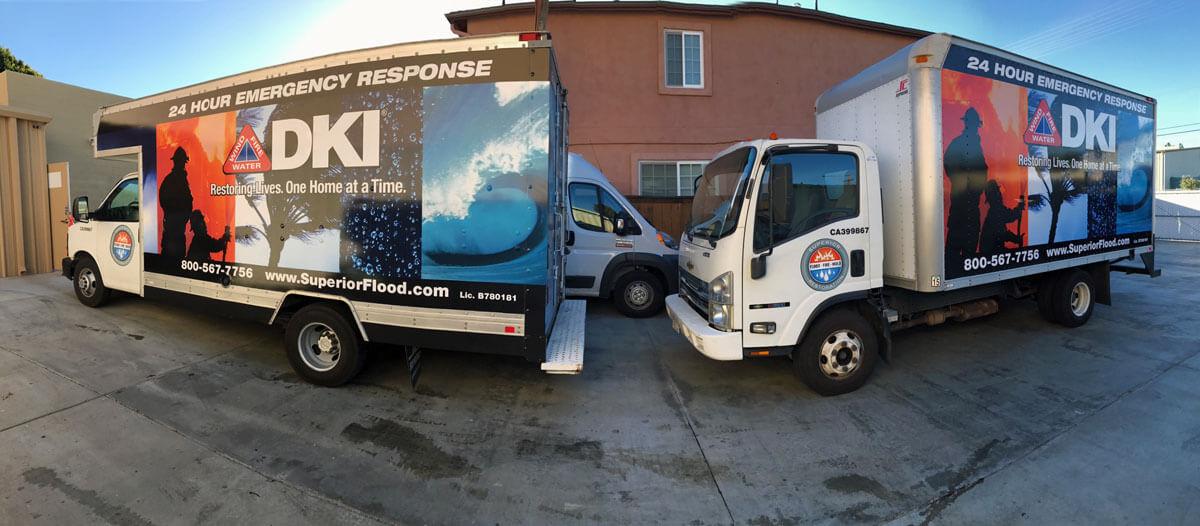When Do You Need a Water Damage Restoration Specialist?
- Apr 20, 2024 7:00 AM
- Mert

Wondering whether you need to bring in a professional water damage restoration company? The right choice isn't necessarily a matter of scale. It's more about damage mitigation — is the rate of evaporation high enough to get everything thoroughly dry before further destruction sets in. And only anti-microbial specialists have the training and equipment needed to safely deal with a sewage backup.
With good soaking water quickly makes its way past flooring and into the sub-floor. It even wicks upwards in walls and reaches deep within the structure. From there it remains trapped and hidden for weeks. But progressive damage begins in just the first day or two.
- carpets mold underneath
- drywall sags and disintegrates
- wood swells, warps, splits and eventually rots
- paint bubbles
- electric wiring corrodes and shorts
- wood flooring buckles or cups
- tiles become loose
- and more
So besides surface water damage cleanup, aggressive structural drying is often necessary. If there are any doubts keep in mind that insurance typically requires immediate professional damage mitigation for any secondary damage to be covered. Here are the key things you need to know
IICRC Guidelines
The IICRC (Institute of Inspection, Cleaning, and Restoration Certification) is the leading non-profit organization in the cleaning and restoration industry. Their standards and guidelines publication breaks water damage cleanup into 4 classifications based on the area and types of material affected (https://en.wikipedia.org/wiki/Water_damage).
Class 1 involves only part of a room and materials such as wood, vinyl tile, and concrete. These incidents can often be handled by homeowners and business owners. With large areas of carpet soaked and water seeping upwards in walls (Class 2) moisture reaches into the structure. Dry out requires a high rate of evaporation, and damage mitigation without special training and equipment risks additional damage in the days and weeks to come.
The IICRC also defines 3 categories for water damage restoration based on the degree of biological contamination. Categories 1 and 2 involve sources such as appliances and plumbing in your home and don't pose severe health hazards for a few days. Category 3 involves sewage, water that's been in contact with the ground, and long-standing water. These call for special procedures and an applied anti-microbial expert.
What Needs to be Done
The goal is to get all moisture levels, including those deep within the structure, down to safe levels within 2-3 days. Removing "floodwaters" isn't enough. Anytime floors and walls are soaked hidden moisture is likely to remain even after surfaces seem dry. You can find lots of instructions on water damage removal on the web, and in absolute terms, there's nothing you can't do yourself. But by the time you find out something isn't working as planned it's too late to prevent mold and other damage. A professional team will have plenty of personnel with all the training and equipment necessary for the fastest and the most thorough water damage mitigation and restoration. And they should guarantee their services.
Here's a partial "birds-eye-view" list of all the things that need to be done.
- Remove any standing water.
- Open cabinet and closet doors.
- Remove wet furniture and other items from the area.
- Use a wet/dry shop vac for surface water extraction.
- Lift carpet so that it can dry from both sides. Discard and replace the padding.
- Set up fans to circulate indoor air, especially in closets, corners, and small recesses.
- If the outdoor humidity is low, open windows and use additional fans to provide lots of dry air.
- Keep all fans running 24 hours a day for several days.
- In the meantime clean and disinfect all affected surfaces.
Keep in mind that professional water extraction vacuums, dehumidifiers, and air movers are special-built and far more effective. With significant flooding, it may also be necessary to open up wall cavities to remove structural moisture. Depending on the water damage situation that may involve removing baseboards and drilling small holes, or opening up large sections.
To fix water damage it's often necessary to:
- replace carpet padding and often the carpet or other flooring materials,
- replace acoustic tile,
- replacing cabinetry,
- patch or replace wallboard, and
- access and replace the insulation.
If the scale of flooding is such that you're fully confident you can accomplish all that in just a few days, study up and go for it. Otherwise, there's a big risk of extensive (and expensive) secondary damage if you don't bring in professional water damage restoration specialists.
Contractors License #780181
